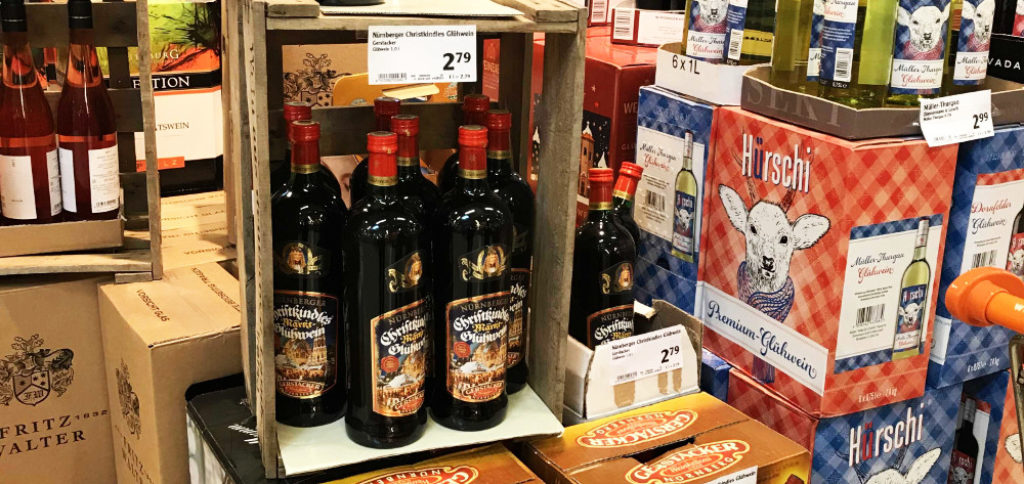Mulled wine market: more innovative than ever

As one of the most innovative hot beverages, mulled wine – or Glühwein, as it is called in German – has had an incredible career over the past fifty years. The drink debuted in the German consumer segment as a packaged product at traditional Christmas markets in the 1950s, quickly becoming a bestseller. Beginning in the 1960s, inventive wine masters at several wine importers in Bavaria developed recipes for ready-made mulled wine. The beverage – previously brewed in small batches using red wine, citrus fruits, granulated sugar and traditional spices such as cinnamon, cloves or cardamom – has been bottled for consumers ever since.
The idea spread quickly, and mulled wine in bottles became a hit for food retailers. Today, experts estimate sales of mulled wine at around 80 million liters in Germany alone, most of which is consumed during the weeks before Christmas. Food retailers sell an estimated 50 million liters, half of that at discount supermarkets, and another 30 million liters at outdoor Christmas markets throughout Germany.
Christmas markets popular in many countries
Germany’s gastronomy industry estimates that there are some 4,000 Christmas markets in the country. They have also become a beloved German export. Whether in Paris, London, New York or Amsterdam: Christmas markets boom from mid-November through the end of the year and beyond. Millions of units are sold in mere weeks. It’s therefore no surprise that the industry is launching one innovation after another. Indeed, mulled wine has come a long way from its roots as a simple red wine with a lot of sweetener and just about any flavoring.
Although cheaper products are still available, the entire segment is uptrading. Large wineries and small vintners alike are heating up the market by launching customized, craft mulled wines. Both vintners and winegrowers’ cooperatives are emphasizing the quality of mulled wine; in addition to good ingredients, it ultimately comes down to the base wine.
Wide variety of products
From traditional producers to market newcomers, the segment certainly is inventive. Consumers can choose from practically any flavor imaginable. Winter offerings range from classic mulled red wine to a “hot Hugo” made with white wine, punch, “hot orange” and mulled wine flavored with pomegranate, apple, cinnamon, blueberry or cherry. There are also creative products such as the Glüh-Elch, or mulled moose, for young target groups, which Nuremberg-based market leader Gerstacker is launching to complement its extensive product line. Organic mulled wine is just as commonplace in today’s product portfolio as mulled wine with chocolate flavor, sometimes marketed under the catchy name of “Choco Rosso.” Consumers can also opt for vegan mulled wine and all types of punch, either as white wine flavored simply with citrus or herbs, or with rum or Amaretto added.
What exactly is in my mulled wine?
The base for most of the hot beverages remains red or white wine from Italy or Spain that exhibits a dark color and contains approximately 10 to 11 percent alcohol by volume. Unless the base consists of a varietal wine, typically a Dornfelder mulled wine or Riesling punch from Germany, purity and a rather neutral taste are preferable. This in turn enhances the prominence of a given flavoring in the final product. While most mulled wines on the market are between ten and eleven percent alcohol by volume, some producers have turned to wines with more alcohol, which imparts more richness and body to a product.
Along with organic mulled wine, which yielded double-digit growth for organic-wine specialist Peter Riegel last year, rosé mulled wines and rosé wines are both enjoying continued popularity in the German market. The many new and innovative varieties are broadening the price range for producers and retailers: entry-level wines can cost under two euros at food retailers, while a vintner’s craft mulled wine might easily sell for more than five euros. Experts anticipate that premium varieties will continue to stretch the spectrum of prices this season.
Sophisticated flavorings
Along with bottled mulled wines and hot beverages of ever higher quality, their flavorings are likewise increasing in sophistication. Major flavor producers deliver complete flavorings, offering their preliminary products to bottling plants as “natural” or “creative” taste experiences. Creating suitable flavorings and finding the right balance for finished products is not easy. And it requires a great deal of experience with aromas and olfactory substances, as well as knowledge of their effects. In addition, temperature plays an important role. And certain substances cannot be combined if the goal is a product that is neither soapy nor bitter, but instead smells and tastes fruity and subtly seasoned.
Many sizes and varieties
In the past, one-liter bottles were the standard size for ready-to-drink mulled wine, usually sold in somewhat bulbous bottles. Nowadays, primarily the higher-quality mulled wines in 750-milliliter bottles are capturing more market share. Germany’s market leader, Hauser in Fischach, even produces an eye-catching flip-top bottle for one of its premium wines. For cost-conscious consumers, the industry now offers mulled wines and various hot beverages in 1-liter and 1.5-liter PET bottles. As a result, the catering sector has taken advantage of the better availability and increased variety of mulled wines and other products. What’s more, the segment has long offered mulled wine in 5-liter and 10-liter canisters for Christmas markets and large culinary establishments.
The sheer number of products and different flavors has considerably expanded the market for hot beverages. While New Year’s Eve fireworks used to signal the end of the season, people nowadays even drink mulled wine during carnival. After all, a sip of a hot drink is always ideal for warming up in the cold. In short, mulled wine may be a traditional product, but it is revitalizing the beverage market with modern and trendy innovations. No major winery or food retailer wants to miss out on this evolution in consumer behavior.
